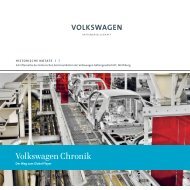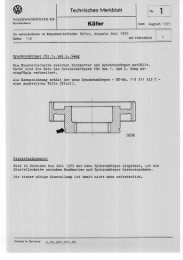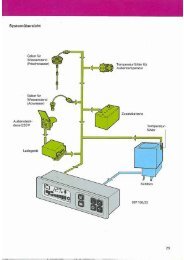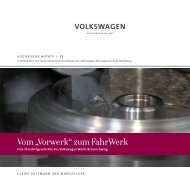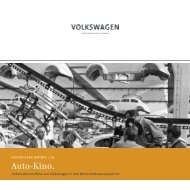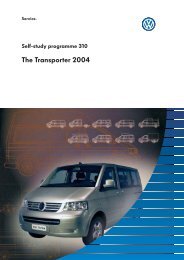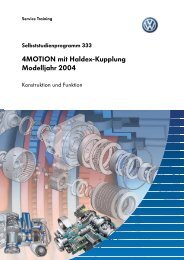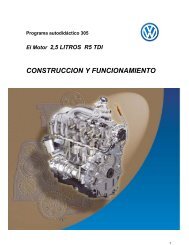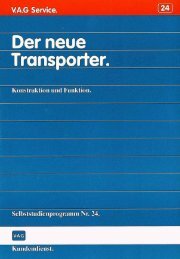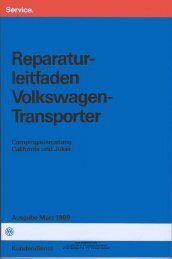HN 2: The British and their Works
HN 2: The British and their Works
HN 2: The British and their Works
You also want an ePaper? Increase the reach of your titles
YUMPU automatically turns print PDFs into web optimized ePapers that Google loves.
<strong>The</strong> absence of special tools led to hold-ups in manufacturing.<br />
That part of the toolmaking division which had been evacuated<br />
to France was lost in the wake of zoning, <strong>and</strong> at the start of 1946<br />
the toolmaking factories were waiting for manufacturing<br />
permission. <strong>The</strong> factory management therefore called upon<br />
Richard Berryman to intervene with the Military Government.<br />
Colonel Radclyffe was given a list of companies which could be<br />
considered as possible suppliers for the Volkswagenwerk. But<br />
this intervention did not meet with any great success. <strong>The</strong> resulting<br />
hiatus was filled in only a makeshift fashion through<br />
in-house production at the Vorwerk. <strong>The</strong>re were insufficient raw<br />
materials available to produce tools in adequate quantities. This<br />
resulted in shortages, above all in the case of cutting tools.<br />
Forming tools <strong>and</strong> form cutters were not available as st<strong>and</strong>ard<br />
tools; the companies declined to manufacture them. <strong>The</strong> waiting<br />
time for a "broach", for example, was eight months.<br />
Quite apart from the procurement problems, the tool store was<br />
in a catastrophic condition. <strong>The</strong>re was no information concerning<br />
tool requirements, because the relevant card-index had<br />
fallen to the flames. <strong>The</strong> tools used by the workers, some of<br />
which simply lay around in the factory, were not inventoried,<br />
which only fostered losses. A lack of supervision <strong>and</strong> planning<br />
also contributed to the fact that the distance between the<br />
Vorwerk <strong>and</strong> the main factory sometimes inhibited the production<br />
flow, because damaged tools could not always be replaced<br />
from the stores. This chronic state of affairs was the subject of<br />
a meeting at the beginning of September 1946. <strong>The</strong> situation<br />
had by now become so bad that most tools could now only be<br />
obtained via barter deals or connections. General manager<br />
Münch ordered the relevant employees to carry out a stock take,<br />
indicating which tools could be procured by the purchasing<br />
department <strong>and</strong> which could be manufactured by the<br />
Volkswagen plant itself. 56<br />
Under these circumstances, the monthly production of 4,000<br />
cars originally planned by the <strong>British</strong> looks like a pipe dream.<br />
It was based on the maximum capacity of machines <strong>and</strong> conveyor<br />
lines, <strong>and</strong> in addition the achievement of this figure presupposed<br />
ideal conditions: uninterrupted supply of materials<br />
<strong>and</strong> purchased vehicle components, a sufficient number of<br />
skilled <strong>and</strong> unskilled operatives, <strong>and</strong> normal rations. <strong>The</strong> Volkswagenwerk<br />
was a long way from meeting such conditions. <strong>The</strong><br />
ultimately revised target scheduled a monthly production of<br />
1,000 Volkswagens for the <strong>British</strong> military government – <strong>and</strong><br />
even this programme could not be consistently filled.<br />
24 25<br />
THE IMPROVED UPSWING



